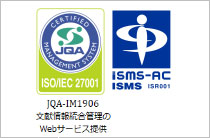ホームIMICライブラリMMWR抄訳2016年(Vol.65)感染した養豚のブタが出展された農産物評価会の参加者・・・
2016/10/28Vol. 65 / No. 42
MMWR65(42):1157-1160
Outbreak of Influenza A(H3N2) Variant Virus Infections Among Persons Attending Agricultural Fairs Housing Infected Swine — Michigan and Ohio, July–August 2016
感染した養豚のブタが出展された農産物評価会の参加者におけるインフルエンザA(H3N2)変異型ウイルス感染症のアウトブレイク ― ミシガン州およびオハイオ州、2016年7月~8月
2016年8月3日、Ohio Department of Health Laboratoryは2016年7月22~29日にオハイオ州で開催された農産物評価会に参加した後に呼吸器疾患を発症した13歳の男児から7月28日に採取した呼吸器検体がrRT-PCR法にてインフルエンザA(H3N2)変異型(H3N2v)陽性であったとCDCに報告した。翌日、Michigan Department of Health and Human Services Laboratoryに7月29日にミシガン州で開催された農産物評価に出展されていたブタに触れた9歳の男児がH3N2v陽性であったことが報告された。オハイオ州とミシガン州の保健機関による調査にて、農産物評価会に出展されたブタによる感染例が8月3日~25日の間に18例確認された(ミシガン州:12例、オハイオ州:6例)。18例のうち16例は18歳未満であり、7例は5歳未満であった。全例、農産物評価会(ミシガン州:3ヵ所、オハイオ州:4ヵ所)に参加した際ブタに曝露しており、13例は直接接触し、直接接触のなかった5例のうち4例はブタがいた小屋は通過したと報告し、1例は間接的にブタに接触していた。7ヵ所の品評会に出展されたブタの血清検体は全てインフルエンザA(H3N2)ウイルス陽性あった。感染した18例のうち8例は基礎疾患や年齢からインフルエンザ合併症のリスクが高く、1例は2日間入院したが、全例が完全に回復した。また、6例がインフルエンザ抗ウイルス薬により治療を受け、ワクチン接種歴の明らかな17例のうち、3例が12ヵ月以内に季節性インフルエンザワクチンの接種を受けていた。CDCは18例の血清検体のゲノム配列分析を行い、2種類の異なるH3N2vウイルスを確認した。検出された18の変異ウイルスのうち、16はリアソータントであり、遺伝子配座は今までの感染例では検出されていないものであったが、インフルエンザA(H3)ヘマグルチニン(HA)遺伝子をコードするセグメントを含んでいた。このHA遺伝子は2010、2011年のヒト季節性インフルエンザA(H3N2)に認められたHA遺伝子と類似しており、このHA遺伝子がヒトからブタへ導入され、ブタの中で進化したと考えられる。品評会にブタを出展する場合、感染を認める場合には隔離とし、展示する間は獣医を常駐させ、また、手洗い所を設置し、ブタに触れた後はよく手を洗うよう推奨し、さらにブタのいる小屋での飲食は禁止し、インフルエンザ合併症のリスクが高いヒトはブタの展示施設には入るべきではない。
References
- Council of State and Territorial Epidemiologists. National reporting for initial detections of novel influenza A viruses. Position statement 07–ID01. Atlanta, GA: Council of State and Territorial Epidemiologists; 2007. <http://c.ymcdn.com/sites/www.cste.org/resource/resmgr/PS/07-ID-01.pdf>
- CDC. Influenza (Flu): influenza A (H3N2) variant virus. CDC recommendations for people at high risk. Atlanta, GA: CDC; 2016. <http://www.cdc.gov/flu/swineflu/h3n2v-cases.htm>
- Rajão DS, Gauger PC, Anderson TK, et al. Novel reassortant human-like H3N2 and H3N1 influenza A viruses detected in pigs are virulent and antigenically distinct from swine viruses endemic to the United States. J Virol 2015;89:11213–22. <http://dx.doi.org/10.1128/JVI.01675-15>
- Epperson S, Jhung M, Richards S, et al.; Influenza A (H3N2)v Virus Investigation Team. Human infections with influenza A(H3N2) variant virus in the United States, 2011–2012. Clin Infect Dis 2013;57(Suppl 1):S4–11. <http://dx.doi.org/10.1093/cid/cit272>
- Jhung MA, Epperson S, Biggerstaff M, et al. Outbreak of variant influenza A(H3N2) virus in the United States. Clin Infect Dis 2013;57:1703–12. <http://dx.doi.org/10.1093/cid/cit649>
- Chou YY, Albrecht RA, Pica N, et al. The M segment of the 2009 new pandemic H1N1 influenza virus is critical for its high transmission efficiency in the guinea pig model. J Virol 2011;85:11235–41. <http://dx.doi.org/10.1128/JVI.05794-11>
- Ma J, Shen H, Liu Q, et al. Pathogenicity and transmissibility of novel reassortant H3N2 influenza viruses with 2009 pandemic H1N1 genes in pigs. J Virol 2015;89:2831–41. <http://dx.doi.org/10.1128/JVI.03355-14>
- CDC. Influenza (Flu): reported infections with variant influenza viruses in the United States since 2005. Atlanta, GA: CDC; 2016. <http://www.cdc.gov/flu/swineflu/variant-cases-us.htm>
- National Assembly of State Animal Health Officials; National Association of State Public Health Veterinarians. Measures to minimize influenza transmission at swine exhibitions. Arlington, VA: National Assembly of State Animal Health Officials; 2014. <https://www.cdc.gov/flu/pdf/swineflu/influenza-transmission-swine-exhibitions-2014.pdf>
- Bowman AS, Workman JD, Nolting JM, Nelson SW, Slemons RD. Exploration of risk factors contributing to the presence of influenza A virus in swine at agricultural fairs. Emerg Microbes Infect 2014;3:e5. <http://dx.doi.org/10.1038/emi.2014.5>
Copyright © 2013 International Medical Information Center. All Rights Reserved.












